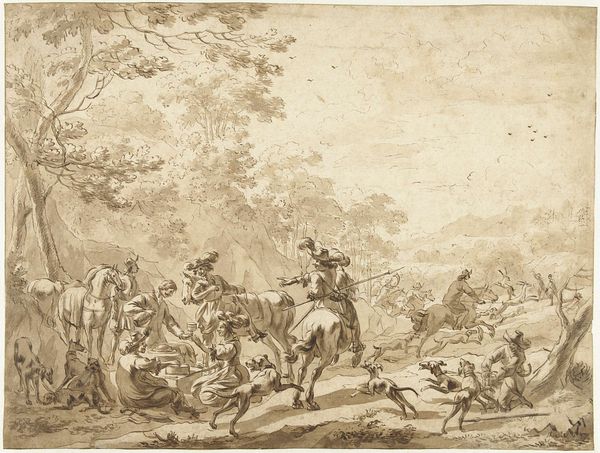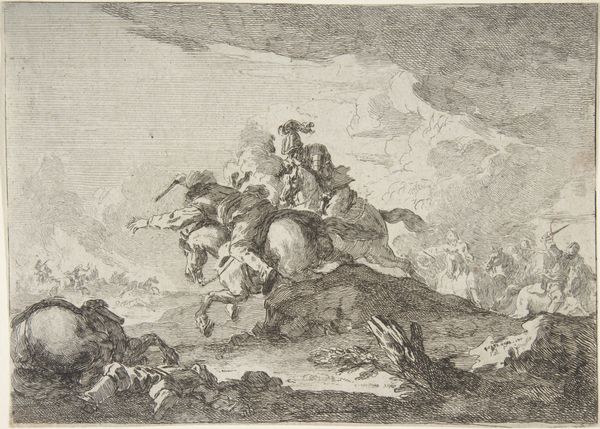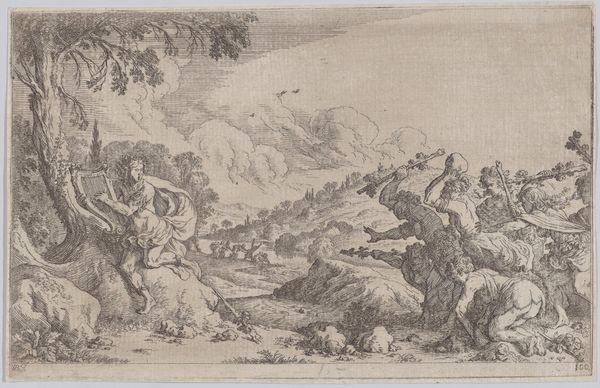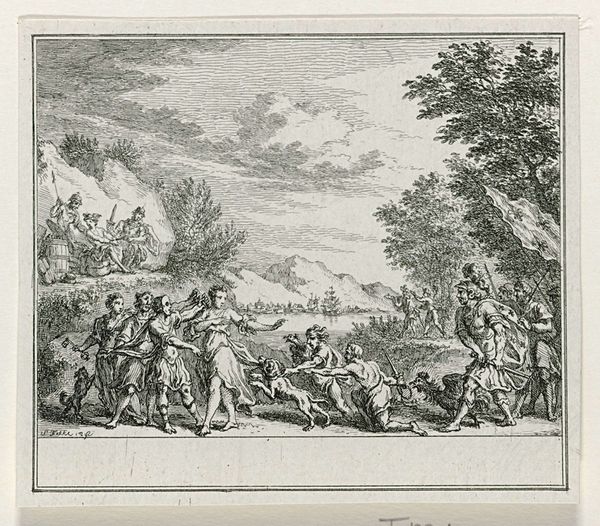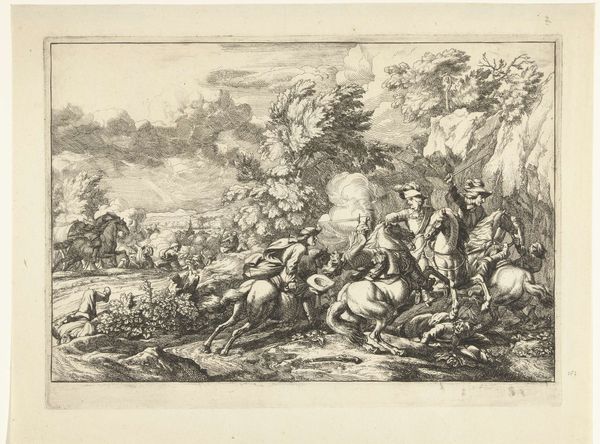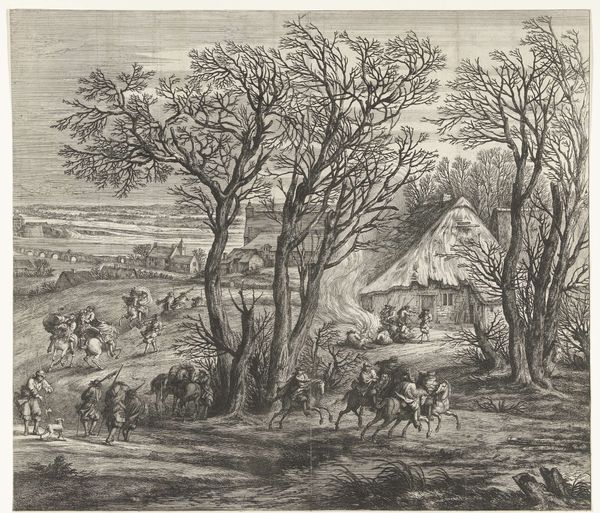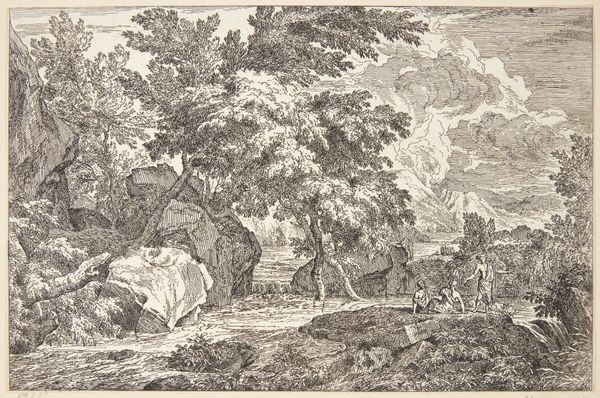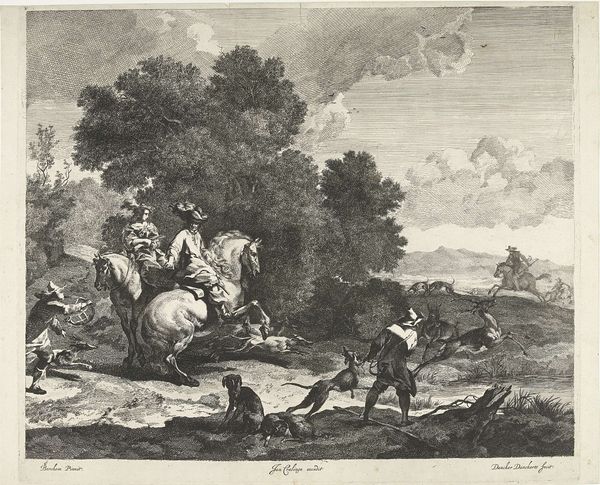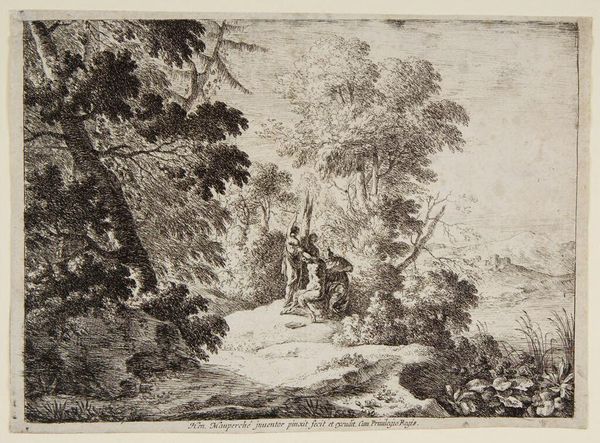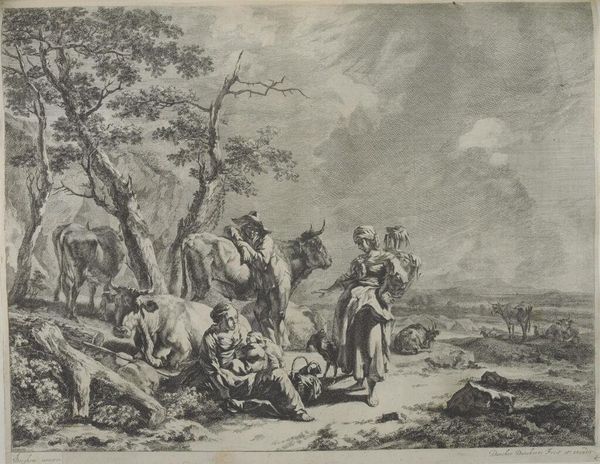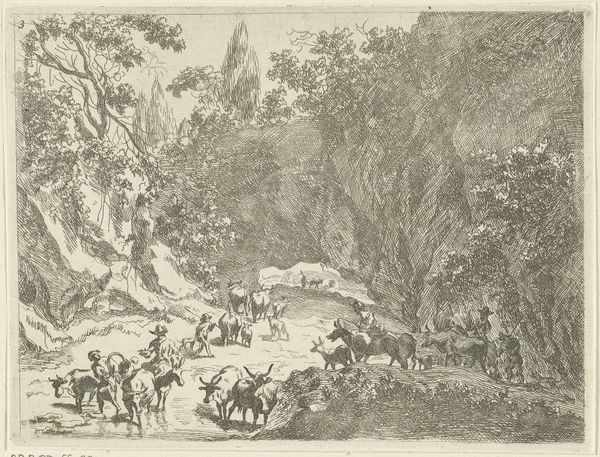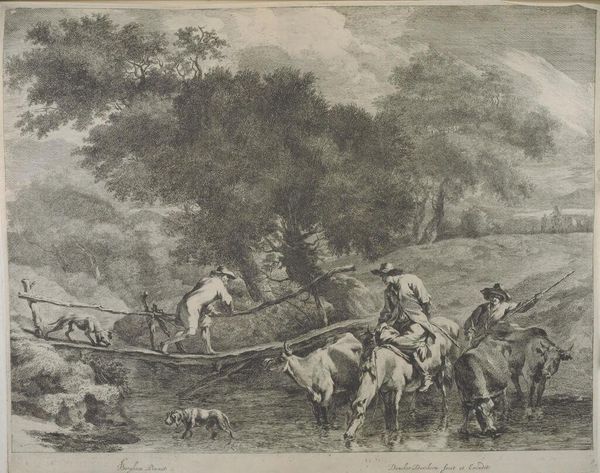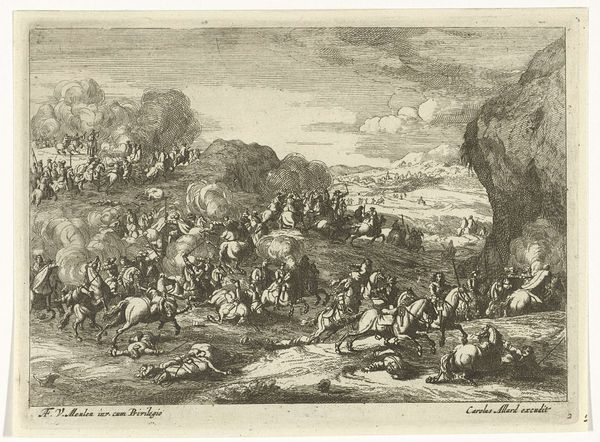
drawing, print, engraving
#
drawing
#
narrative-art
#
baroque
# print
#
landscape
#
figuration
#
line
#
genre-painting
#
history-painting
#
engraving
Dimensions: 372x490 mm (sheet; trimmed)
Copyright: Public Domain
Curator: What a dramatic scene unfolding before us! This print, created around the 1640s, is entitled *The Robbery of the Wagons*. It’s attributed to Cornelis Visscher, and you can find it here at the Art Institute of Chicago. Editor: Violence bursting from every corner! There's a raw, visceral energy here, all swirling lines and dynamic poses. I'm immediately struck by the chaos, figures tumbling from horses, swords raised, and the looming threat of the forest. It feels immediate, almost cinematic. Curator: Absolutely, it’s Baroque dynamism captured perfectly. The print, being an engraving, is composed of numerous fine lines to build up tonal depth and convey that very sense of dramatic movement that characterizes Baroque art. You’ll see diagonals dominate the composition—lines of action shooting in multiple directions. Editor: It reminds me that landscape in art often sets the stage for human dramas. Think about the symbolism inherent in the forest, which looks to me almost hostile here—as a space of danger and the unknown. The robbery is set within this intimidating, untamed wilderness. How complicit is the landscape in the crime, do you think? Curator: The forest absolutely amplifies the lawlessness of the act. There is little order, natural or societal, it suggests a kind of base instinct driving the events, certainly one where justice and equity is absent. Genre scenes like this gained popularity during the Baroque period, because they mirrored shifts in socio-political consciousness; more attention began to be paid to the plight, even villainy, of the common person. It isn't just a historical depiction, but an expression of something unfolding in society. Editor: And perhaps a way of reflecting, or even sanitizing collective fears? These narratives of robbery, violence and transgression offered people some way of psychologically managing widespread disorder by displacing it into art? Curator: Precisely! Art is often tasked with navigating these complexities. Think of how ingrained similar narratives remain to this day: the tensions, power struggles and anxieties of humanity, visually manifested. Editor: Yes, it’s almost timeless, really, isn’t it? And it really does draw me in, it leaves a lingering image and feeling about those historical circumstances. Curator: Me too. The impact this scene has really exemplifies how we process shared cultural memory and the themes we project on such an image.
Comments
No comments
Be the first to comment and join the conversation on the ultimate creative platform.
